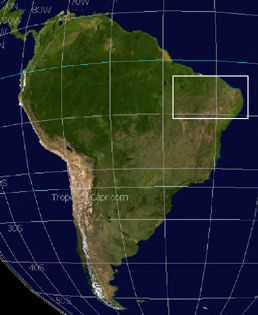|
K-feldspar megacrysts are characterisitc of the K-rich granites of the Borborema Province in NE Brazil. This page shows bent K-feldspars in outcrop and thin section. I interprete these crystals to have started their deformation within a mush with a solid framework of crystals and an interstitial volume of melt, and continued as the mush became fully crystalline as evidenced by undulose extinction and subgrain formation in interstitial quartz. For more on recovering and recrystallization of K-feldspar grains see Vernon, 2004, "A Practical Guide to Microstructures" and Altenbergh and Wilhelm, 2000, Tectonophysics 320; Bell and Johnson, 1989, J. Metam. Geol. 7. |
A) K-feldspar megacryst
indentation 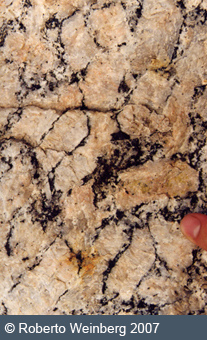
|
B) Phtotomicrograph 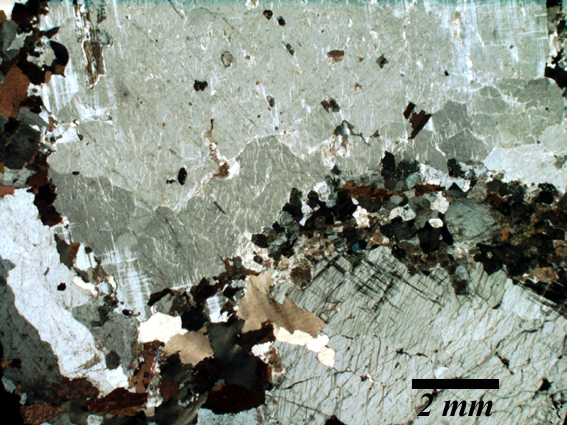 Phtotomicrograph of bent megacryst on the upper half of the image, and an indentor megacryst on the lower half. The two are separated by a fine-grained layer of dusty plagioclase, quartz, biotite, and hornblende. Note the recrystallization of the upper megacryst detailed in the figures below. Crossed polars. |
C) Zooming in on B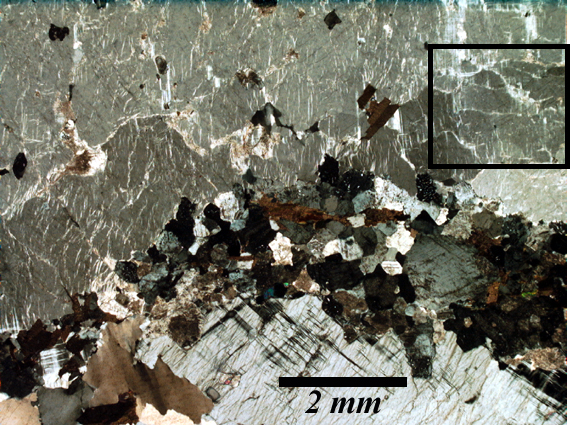 Recrystallization of megacryst leading to polygonal new grains formed possibly through subgrain boundary rotation or fracturing. White irregular streaks are perthite exsolution. Box shows position of F. Crossed polars.
|
D) Zooming in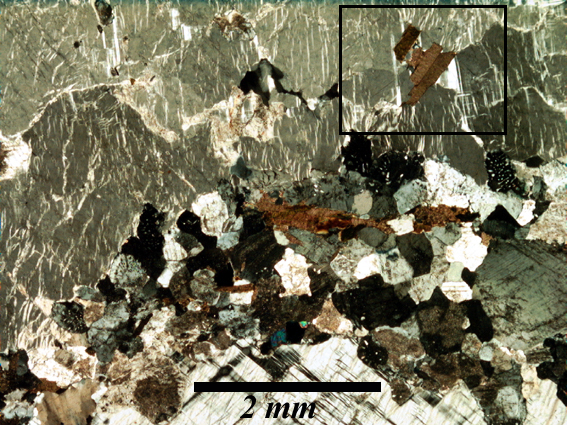 Note the recrystallization of the upper K-feldspar. Box indicates position of G. Crossed polars. |
E) Right of C 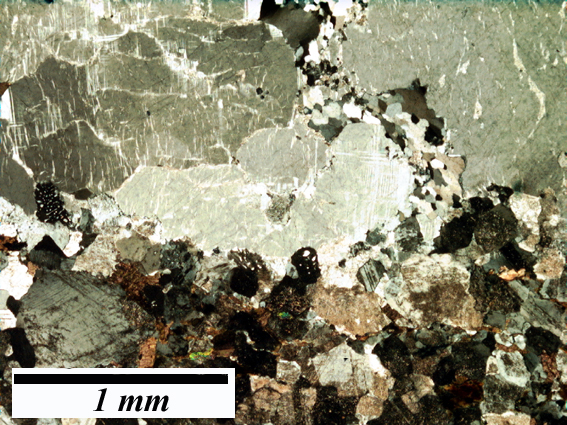 |
F) Polygonal new grain
with subgrains 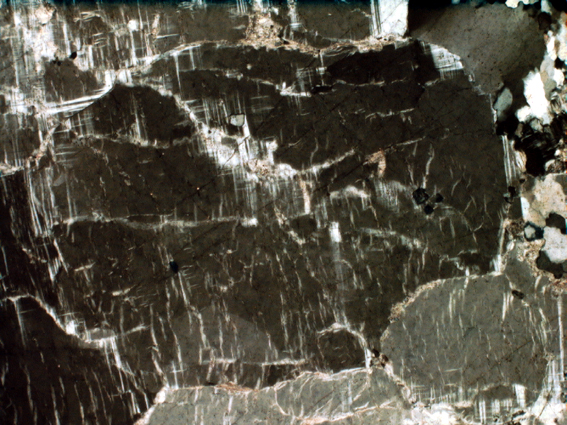 |
| New, ellipsoidal grain within the upper megacryst in B and C, see box in C for location. There is a region where tartan twinning develops diagonally from the upper left to the lower righ. Irregular perthite occur throughout the grain and are seen as white streaks. The ellipsoidal large grain is divided into what looks to be a number of subgrains, but it is possible that their boundaries are fractures accommodating small rotations across them, as indicated by trails of fluid inclusions. Crossed polars. Base of photo is 2.6 mm long. |
G) Lower megacryst 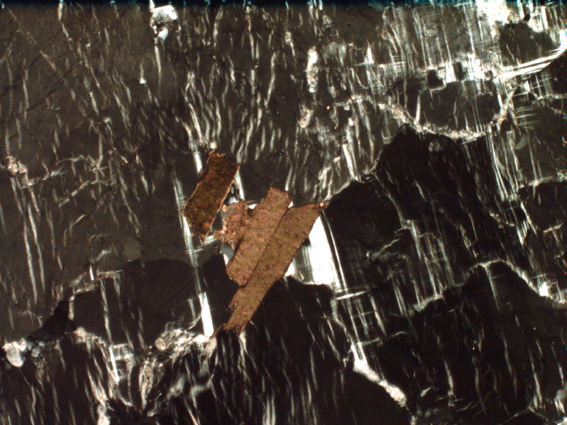 Biotite inclusion in megacryst controling the development of flame perthites (Pryer and Robin, 1995, J. Struct. Geol. 18, 1151-66). Base of photo is 2.85 mm long. Crossed polars. |
H) 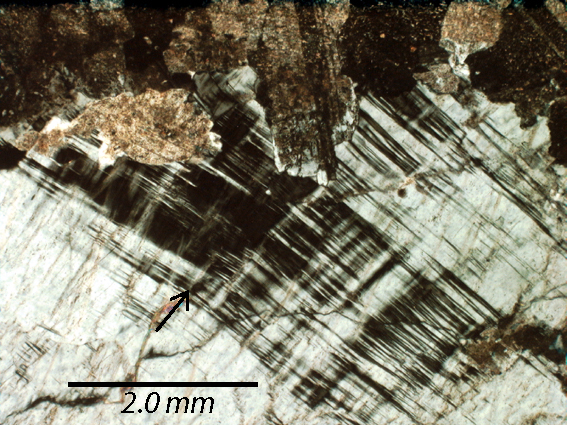 Lower megacryst in B, showing a new grain boundary marking an angular change in the tartan twin orientation of ~10o twinning pattern at arrow. Dusty graand lammelar twinned grains on the left are plagioclase grains. Crossed polars. |
